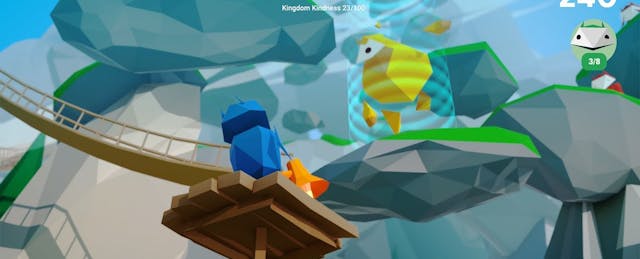Open up a new tab, and do a quick Google Search for “The Internet is full of…”
I’m guessing your autocomplete looks similar to mine: “The Internet is full of lies.” “The Internet is full of false information.” “The Internet is full of jerks.” “The Internet is full of terrible people.”
I wasn’t at all surprised. When I ask my fifth graders what they know about Instagram, Facebook, Youtube, and SnapChat, I’m often met with stories about the dangers of cyberbullying or unavoidability of Internet trolls trying to tear down a harmless video they posted on Youtube.
Unfortunately, these negative behaviors aren’t just coming from strangers. Students and classmates bully each other online, too, and it’s pretty awful when it happens. This week it may be via email, next week it may be a snide comment on their older sister’s Instagram account. The fact is the Internet can be a big, scary place for kids, and some students are starting to accept this as the norm.
The trouble is many of our students operate under the assumption that a divide exists between the “real world” and the “digital world.” This separation between our true selves and our internet personas has led to some of my students believing it’s okay to be kind in the classroom, but a complete troll online. As educators, our goal should be to eliminate this divide. We want our students to be “good citizens” in the real world, so why should this extend to the very real digital world—even if we can’t always see the person on the other side of the screen?
This may sound easier said than done. So when cyberbullying does happen, some teachers’ instinct is to shut it down, filter everything, or head back to the comforting pre-internet world when everyone treated each other with kindness and never spread any rumors about their classmates. Right? Oh wait…
The reality is signing online is not an option for today’s students; it’s a given. So instead of trying to stop students from using, I choose to foster good citizenship (I believe the “digital” part should be ditched since it’s all real life). Rather than focus on raising my students’ awareness of the dangers of living in an online world, I try to change the negative culture which has come along with the anonymity provided by the Internet (I’m looking at you, Youtube comment sections). Rather than tearing down the work of others, I strive to turn the greatest invention since the steam engine into a place of positivity where our students can learn and feel supported.
Fast forward to this past February, when I was given a very unique opportunity by Google:
“Mr. Piercey, we’d love to be able to let you and your students try out out one of our new programs, ‘Be Internet Awesome’, a curriculum and game designed to teach kids to be safe, confident explorers of the online world.”
I jumped at the opportunity to help my students see the internet as a safe and fun place. Within a few weeks, I had a Google film crew in my classroom and my students were given the opportunity of a lifetime.
(I’m the tall, lanky one in the orange shirt, by the way.)
I have to admit, the whole experience was pretty cool. If you have a minute or two this summer, take a look over at Google’s "Be Internet Awesome" resources. It’s a great start if you’re a teacher who has always struggled with how to approach the topic of online safety with your students. The site provides dozens of activities and examples around everything from how to develop a strong password to how to recognize email scams.
One of the best parts is that every in-class activity has a online game component via Interland. It’s not only fun for students, it also got me thinking about the whole concept of how to go about teaching our students how to navigate this big, scary online world. Throughout my eleven years of teaching, I have seen dozens of “good digital citizenship” programs. They mainly boil down to a self-guided checklist:
“Have you ever shared your password with anyone?” Y / N
“Have you ever bullied anyone online?” Y / N
“Have you ever heard of Creative Commons?” Y / N
Of course, teaching students the importance of being a confident, good citizen in the online world can’t really be solved by checklists, or even innovative curriculums like Be Internet Awesome—or games like Interland. Rather the question is: How are we as educators using these tools? Are we giving our students 20 minutes to play the game, and then never addressing the lessons it teaches again throughout the year? Are we modeling the idea of being Internet kind ourselves in the way we interact with the students in class?

While I love how Google is tackling the difficult to discuss issue of Internet safety with their new program, it’s really just going to turn into just another initiative unless we as teachers take the digital lessons it’s trying to teach and apply it to our own practices. Are we modeling kindness in how we interact with our classmates and colleagues? Are we giving constructive feedback to our students that encourages them to grow rather than discourage them with our comments?
I think modeling these practices for our students is a good start. When I first started teaching, I felt like I called a parent/ teacher/ principal conference every time one of my students asked to friend me on Facebook or follow me on Instagram. Today? NBD.
I know that students are watching me on social media and I’m comfortable with that because I know they’re using me as a model for how to navigate and interact in an online world. I choose to Be Internet Kind, and I want them to see that both when they’re in my classroom and when they see me online.
The internet is full of terrible people, but it doesn’t have to stay that way.


